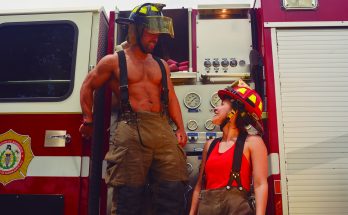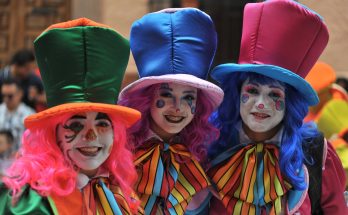By Leonardo Diaz
There is no doubt that San Miguel de Allende played a prominent role in the economic life of colonial times, a historical role in the War for Independence, and a space for artistic spirit. We only need recall intellectuals and humanists, such as Stirling Dickinson and Cossío del Pomar, who created a cultural space for the arts in what is known today as the Ignacio Ramírez, or El Nigromante Cultural Center. Here we can still enjoy the work of master muralists such as David Siqueiros and Pedro Martínez. There is also the Instituto Allende, an old hacienda dating from 1740. In this space, years later, master craftsmen from surrounding communities and US war veterans taking advantage of the GI Bill came together.
Today we can still enjoy those spaces, as well as other historical buildings, like the Sindicato Community Cultural Center and Fabrica la Aurora. Art is everywhere in our city, and is a part of our conversations. Perhaps, like religion, politics, and football, which we are told should not be discussed, art ought to be included as well. I have witnessed intense, arrogant discussions about artistic work inside and outside our municipality. They take place in bars, restaurants, galleries, and public squares. People talk heatedly about Zona MACO, Art Basel, Ai Wei Wei, Fábrica la Aurora, the Allende Institute, and the Nigromante Cultural Center. Friendships have ended over these arguments.
It seems that in SMA art is experienced in two ways: living with the ghosts—those who built the bohemian myth by founding academies, workshops, smearing liters of paint and hours of talent on canvas and walls—and those who opened galleries but are a bit confused about talent in the plastic arts. And yes, there is also contemporary art here. Personally, I like to discuss contemporary art, a topic that seems defined by a series of little-understood aesthetic disciplines. It includes new technologies, performances, installations, concepts as a technical tool for the production of works, and more recently, so-called non-fungible tokens (NFTs).
Contemporary art is art produced in our time. In the current culture (millennial, hipster, cool), it is something more than that: it looks like a kind of entity in constant evolution, where it is difficult to integrate new aesthetic themes if they do not fall under the «trend of the moment.» Everything is moving so quickly. There is so much of everything, and there are abundant stimuli. Some say that now, everything is art. There seems to be an overproduction of aesthetic objects that makes us lose ourselves in a tide of information, fashion, and capital. We can pretend we understand and generate quickly forgettable manufactured objects, covered in cheap-confusing rhetoric, self-valued in airs of academic pedantry, where the cult of personality is present—an egotheque. Another option is to produce according to the dictates of the senses and will of the trade, of love and commitment to what we create from our existential, social, and spiritual themes. In San Miguel I have observed both positions. I know artists who have enjoyed great success, colleagues who exhibit their best pieces in prestigious galleries and museums in the country and abroad. Others continue to find their way. Living full time from the trade is difficult. It is a rough road for many who come from difficult socio-economic conditions. Rich artists, poor artists, admired artists, struggling artists, part-time artists, pseudo artists, tourist artists—they come in all colors and shapes.
San Miguel is torn between the bohemian, romantic, and dreamy past versus the pragmatic, competitive, individualistic, and chic. And what about the artists on the periphery of communities, from neighborhoods that are not at the center of things—rappers, graffiti artists, poets, tattoo artists, illustrators, and break dancers? There are many that no one sees, and yet have so much to offer.
Even with so much time and history we do not have a museum of contemporary art in SMA. Such a museum is urgently needed to bring us together. The ingredients and resources are there, we just need to do the work.

I asked some locals in the art world their opinion about the art that is produced and exhibited in SMA, and here are their answers:
“There is certainly a lot of talent among the artists in San Miguel. However, the dynamics of the town have a strong influence, so that most of the time the results are productions or pieces for commercial purposes, rather than aesthetic, purposeful, or critical art. In terms of theater, I applaud the independent groups that remain steadfast in their work despite slim financial resources. I recognize the work of visual artists who have found their own styles, and spaces are opening up among the multiple galleries lacking identity. San Miguel is a space for meeting, convergence, and mixing. These social dynamics are reflected in the richness and diversity of artistic production.”
—Cristina Solís, director of El Sindicato Community Cultural Center
“In San Miguel there is a very diverse range of art, from the most commercial and ordinary, to research, or avant-garde. There is art produced to be sold that is totally ornamental, but there is also art that is produced differently¸ that focuses on the modes of production, where there is a community, and that has a different fundamental position. Also, art that merges with technology. A wide variety of art is being produced in San Miguel de Allende.”
—Mónica Hoth, playwright and member of the FONCA National System of Art Creators
“My general opinion about art in San Miguel is that it is diverse in quality and styles. Not only plastic, musical, theatrical, and dance art, among others, but also multilingual literary art”.
—Víctor Sahuatoba, director of the San Miguel de Allende Literary Festival and Book Fair
“The artistic tradition in San Miguel de Allende has built a market for local creations that has become important over the years. The number of artists residing in the city and the opening of spaces dedicated to the commercialization of artistic and decorative objects have created a niche that, hand in hand with the buoyant real estate business, have turned artistic creation into an active component of the city’s economy. The expansion of SMA as a tourist destination has been an opportunity to exponentially grow the sale of these objects in recent years. We can see that a large part of artistic creation is commercial spaces or run by the artists themselves, a business model that, if successful, provides the artists with the blessing of living from their work. At the same time, though, this results in something like a professional trap, since the creator continues to produce the type of work that is most in demand, diminishing the development of artistic ability and potential. We notice this in the scarce presence of artists from San Miguel in the professional art exhibition circuits, such as museums, biennials, competitions, foundations, art fairs, and galleries from other cities or countries.
Mexico City is one of the world’s capitals of contemporary art. Dozens of Mexican artists perform with great success on the most important stages in the world. The number of exhibition spaces, dealers, and collectors has developed a powerful and admired art scene. It is the same case on a smaller scale in Guadalajara and Oaxaca, where artistic activity is legitimized by museums, institutions, and professionals from different latitudes who live and work full time in these cities, providing quality activity and generating a critical mass that catapults the creation of their localities to high levels of professionalism.
In San Miguel there are few spaces where it is possible to notice a curatorial line and museographic style that define a project. There seem to be more art factories than galleries. It is true that the quality of the public is not optimal and the local population is small, but after 15 years of sitting in my space at the Instituto Allende, I would venture to say that 5% of the tourists that the city attracts are frequent visitors of museums and exhibitions. They think, or intuit, that Mexican art is still about murals or abstract paintings like Introspection #5.
The lack of museums, events, publications, seminars, and professional activities distance us a lot from the aforementioned cities. There are many examples where museum projects, biennials, galleries, schools, or artist residencies have triggered exponential growth in the quality of creation and the market. To name a few: IAGO, Oaxaca, LUMA, Arles, Galería Continua, San Gimignano, Wabi, Puerto Escondido, and the most emblematic of all—Guggenheim and Bilbao. Hopefully one day…”
—Adolfo Caballero, director of YAM Gallery
The author of this article, Leonardo Díaz (born 1982), is a visual artist who has lived in SMA for over 10 years. His work has been exhibited in different cities across Mexico, as well as in Chicago and Miami (USA), Leiden (Netherlands), and Victoria (Canada). His most recent pictorial series «Inaccuracies of non-immediate history,» is exhibited at Intersección Gallery at Fábrica La Aurora.




